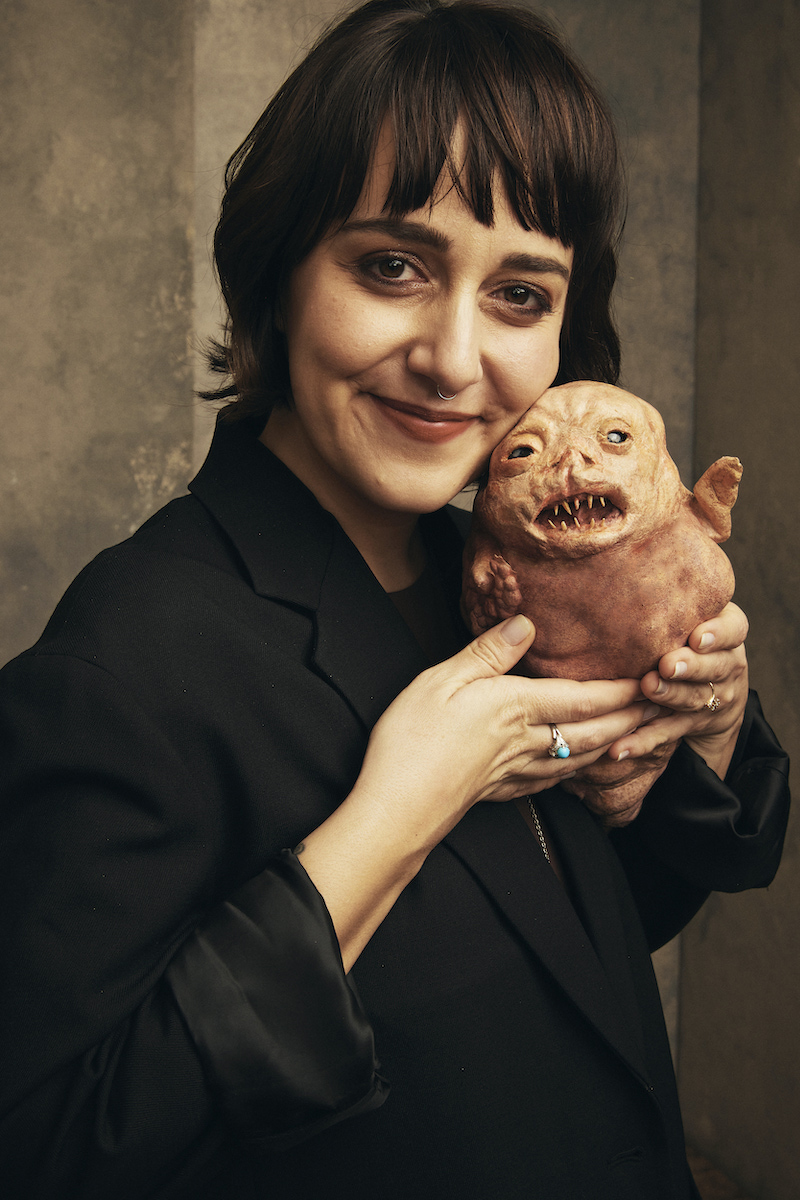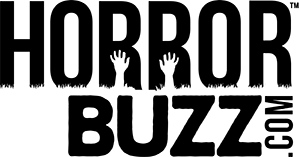Appendage, streaming on Hulu starting October 2, contains a fun bit of body horror, a foul-mouthed creature, and more serious notes regarding creative blocks, trauma, and addiction. The feature-length film grew out of a short that played at Sundance in 2022 and was also part of Hulu’s “Bite Size Halloween.” The feature stars Hadley Robinson as Hannah, a fashion designer under constant pressure. The appendage growing inside of her eventually morphs into a full-blown monster who expresses all of Hannah’s self-doubts. The film also stars Emily Hampshire as Claudia, who isn’t what she initially seems.
We spoke to writer/director Anna Zlokovic about the film and her own creative process. The interview was slightly edited for clarity.

AUSTIN, TX – MARCH 11: Director Anna Zlokovic of Appendage poses for a portrait at SxSW Film Festival on March 11, 2023 in Austin, Texas. (Photo by Robby Klein/Contour by Getty Images)
Can you talk about the process of turning your short Appendage into a feature-length film?
Anna: I think it’s quite rare to be able to do that. It was an interesting thing to navigate in terms of people having expectations about the short. How do you translate that to the feature, but also do something new and exciting with it? Also, what about the short works that we want to keep in the feature? It was really interesting to balance those elements creatively and be able to expand upon it and feel fulfilled about the creative elements that are new. It was cool. It was a great opportunity. I would say that being able to make the short first is almost like a test run. It’s a very lucky and rare experience, for sure.
The feature-length film premiered at South by Southwest earlier this year. What was that experience like for you?
Anna: It was awesome and so cool. I tend to be a little bit of a negative Nancy. I tried to make it not as cool in my head, so I wouldn’t be disappointed. When we went, it was so much fun. The audiences had a great time. It was very fulfilling, and I was super grateful that the film could have that platform. I think it helped a lot.
What was it like directing both Hadley Robinson as Hannah and Emily Hampshire as Claudia? Their characters are drastically different.
Anna: They’re both completely wonderful human beings and so talented. Sometimes, that combination is rare. We got very, very lucky with them and the whole cast, honestly. Kausar Mohammed and Brandon Mychal Smith were also incredible. Hadley had such a huge job on this movie. She’s in basically every single scene. She had to put a lot of effort into that and be so vulnerable and so brave. Because she was, I was able to communicate with her openly. We had to have that kind of vulnerable, open communication and trust for her to be able to do that. She was so down and ready to tell the story the best she could. I think a lot of that is because of the message of the movie. It circulates around mental health, which everyone can relate to. We kept coming back to that. She just took it upon herself to really go there. She’s the best. I can’t wait to see what she does next.
Emily had a really tough role as well. I don’t want to give too much away, but her character is very nuanced and complicated. I find Emily to be such an incredible character actor. Her whole filmography is so different. We knew she would be Claudia from the start. She got super involved with making sure she understood all the facts, mythology, and what it all meant for her character. She dove in and helped with the dialogue. I’m always super into that, an actor bringing their own voice to a character. That was a total joy.
Everyone understood the assignment. They understood it’s an interesting, bizarre, weird movie with a message. Everyone locked into the tone, which was really cool.
What was the inspiration for the monster/appendage? Were there any specific monsters you thought of when writing the creature? I know in other interviews, you’ve mentioned The Fly, Raw, and some other films as inspiration.
Anna: The short and feature pulled from similar references. Other than what I’ve already mentioned, Total Recall’s Kuato, Belial from Basket Case, just as starting points to get us going. Then, so much of it came from Amber Mari, our head creature designer. We went back and forth with 3D models she would create. We also worked with a digital artist who’s really amazing. He used a Midjourney-type software, if it wasn’t Midjourney itself, to create all of these images and generate them. Then we would combine them, and then the team would go off to sculpt the final product. It’s a cool combination of references and just trying to do something different.
You mentioned mental health being at play in the film. I also thought the film addressed creative blocks and even addiction. Am I totally off-base about that?
Anna: I totally think that’s a very interesting interpretation. You must have picked up on the subtle alcohol abuse themes in the movie. Addiction is tied into mental health stuff. That’s certainly a read of the movie that’s accurate. It’s all tied together, anxiety, depression, and addiction. I think that’s important that it got across. It’s supposed to be relatable, and it’s amazing how all of those themes can connect.
The appendage is a pretty harsh critic towards Hannah. What does your own inner critic look like or sound like? Is it as mean as Hannah’s appendage?
Anna: It’s not too different from the appendage. She’s mean. She’s super mean. The movie has three layers. It starts with work, and then friendships, and then family. It kind of digs in as the movie goes on, but there’s also this thing about how self-criticism can motivate you as an artist, which can be a double-edged sword. So that’s part of the movie as well, but it’s ultimately very harmful if it gets out of control, like it does in the movie. My inner critic definitely sounds very similar to the appendage, if not a little bit meaner. [Laughs]. I think everyone’s is so specific to who they are as a person. In the film, we tried to make it specific to Hannah. It always hurts the person who owns it the most, doesn’t it?
The fashion world plays such a big role in Appendage. Why the decision to set the film in the fashion world? Hannah could have been a writer, filmmaker, visual artist, or several other roles, but she’s a fashion designer. Why that decision?
Anna: Great questions! I definitely considered making her a screenwriter, director, or even a painter. What’s interesting about those jobs, which didn’t work for the movie, is that they’re isolated. Yes, you can go in to pitch, but it’s lonely. It’s not very cinematic. Painting would have been an interesting visual thing, but you do it by yourself. It was important to me that there were judgments coming from outside consistently. I also have a few friends who work in fashion. They constantly tell me how difficult it is and how competitive it can be. I thought that’s what we needed. It combines the artistic craft that Hannah has to put into it with a really cutthroat environment. Devil Wears Prada did it really well. I think it worked narratively very nicely. It creates a lot of tension between the characters, versus just trying to have a character attempting to write a screenplay and pulling her hair out. [Laughs].
What advice would you give to any creative to overcome self-doubt and not succumb to their inner critic?
Anna: I would say that it’s totally normal, that it’s totally okay that you’re being really critical of yourself. Everyone goes through that. Don’t be ashamed of that. Accept it. It’s part of the process and totally normal. After that, put it aside. Push through it and also use it for your art as a propelling force.
What’s next for you?
Anna: I am attached to a few things, but you never know what’s going to happen with the universe and luck, but I’m hoping to do a horror film next that’s a little bit darker and a little more intense, but still contains some of that body horror love that Appendage has.
Anna, thank you for taking the time to chat with us!
Appendage streams on Hulu starting October 2.







